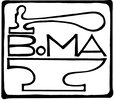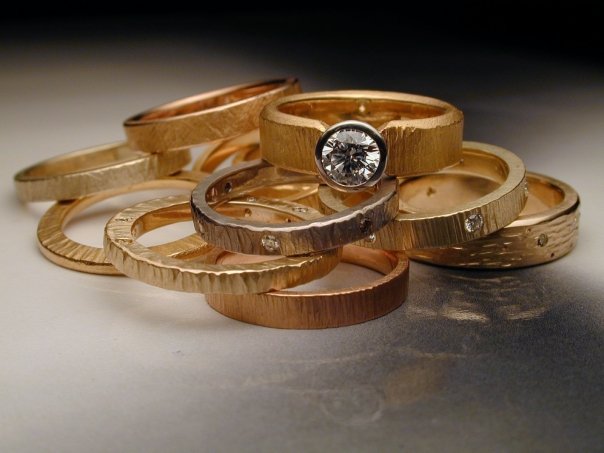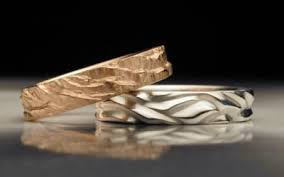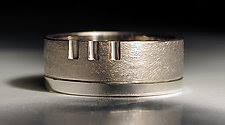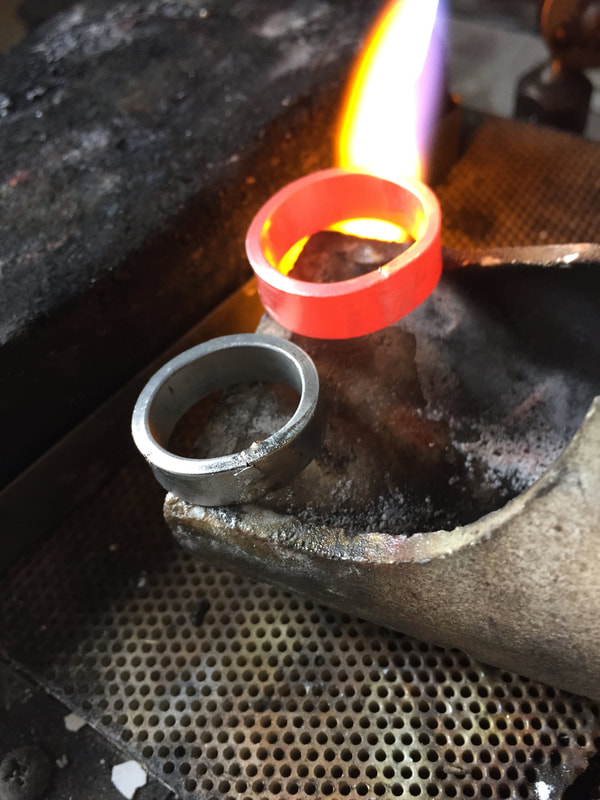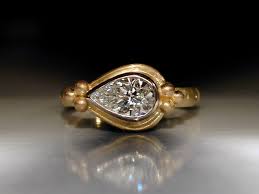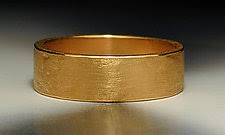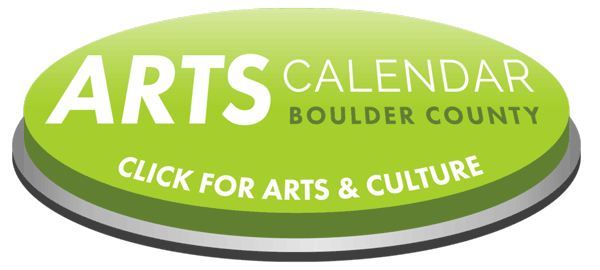Alchemists Workshop
with Jim Dailing
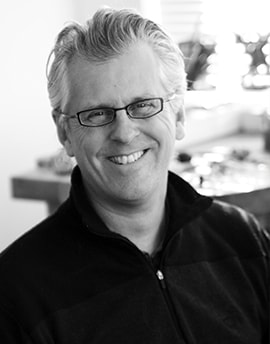
Class Description
Create your own gold alloys, mill the new metals into sheet and wire and then learn to fabricate your newly created objects using gold soldering and fusing. Learn about gold alloys and the unique personalities of the metal in its various compositions. There are a lot more options than what commercial suppliers offer. Beginning with a quantity of your own pure gold, learn to calculate and mix it with other metals, resulting in the karats and colors of your choice in shades of red, green, grey and yellow. Watch and learn how to forge and mill, sheet and wire as you begin to fabricate a project of your own design. Demonstrations include how to use gold solders, fuse metal and use cold connections. Students learn what each karat and color of gold is like to work with as far as malleability, work hardening and annealing during the process of creating jewelry.
Prerequisites
Intermediate to advanced metalsmithing skills are required for this class.
About the Instructor
Jim received his BFA from the University of Wisconsin-Stevens Point and my MFA from the Tyler School of Art and has been making a living as a jewelry designer since 1984 when he worked for Maui Divers in Hawaii. Jim has taught at the University of Oregon, Portland University and more recently at the Central Oregon Community College. He's also taught many jewelry making workshops and classes across the country.
Check out his website to see more of Jim's work!
Students need to bring
Students will be providing as much pure gold as they can afford and want to bring. Jim suggests bringing a full ounce, but ½ ounce will work.
Purchasing a pure gold coin is much more cost-effective than 24k casting grain, which comes at a premium. Using a shear, Jim will demonstrate the most efficient way to divide up the material. It is recommended that students bring a coin weighing 1/2 ounce to 1 ounce. The more gold you have, the more alloying options and fabricating you'll be able to complete.
Jim suggests the Canadian Maple Leaf or Krugerrand coins, but any pure gold coin will do. Locally, gold coins can be purchased at Tebo Coins in Boulder. Be sure to bring cash, as credit cards aren't accepted for purchase.
Any hand tools that a student would normally work with including
Materials Kit (Supplied by Instructor)*$25
Fine silver and copper needed for alloying.
*Materials kit purchase is required for all our workshops. The kit insures all students have the same tools and materials required to learn the technique and allows the instructor and the students to focus on the technique rather than the materials
Cancellation Policy
Maximum Number of Students
Ten. Students must be over 18 years old and will be required to sign a waiver. Students must wear closed-toe shoes.
Registration Open Now
Create your own gold alloys, mill the new metals into sheet and wire and then learn to fabricate your newly created objects using gold soldering and fusing. Learn about gold alloys and the unique personalities of the metal in its various compositions. There are a lot more options than what commercial suppliers offer. Beginning with a quantity of your own pure gold, learn to calculate and mix it with other metals, resulting in the karats and colors of your choice in shades of red, green, grey and yellow. Watch and learn how to forge and mill, sheet and wire as you begin to fabricate a project of your own design. Demonstrations include how to use gold solders, fuse metal and use cold connections. Students learn what each karat and color of gold is like to work with as far as malleability, work hardening and annealing during the process of creating jewelry.
Prerequisites
Intermediate to advanced metalsmithing skills are required for this class.
About the Instructor
Jim received his BFA from the University of Wisconsin-Stevens Point and my MFA from the Tyler School of Art and has been making a living as a jewelry designer since 1984 when he worked for Maui Divers in Hawaii. Jim has taught at the University of Oregon, Portland University and more recently at the Central Oregon Community College. He's also taught many jewelry making workshops and classes across the country.
Check out his website to see more of Jim's work!
Students need to bring
Students will be providing as much pure gold as they can afford and want to bring. Jim suggests bringing a full ounce, but ½ ounce will work.
Purchasing a pure gold coin is much more cost-effective than 24k casting grain, which comes at a premium. Using a shear, Jim will demonstrate the most efficient way to divide up the material. It is recommended that students bring a coin weighing 1/2 ounce to 1 ounce. The more gold you have, the more alloying options and fabricating you'll be able to complete.
Jim suggests the Canadian Maple Leaf or Krugerrand coins, but any pure gold coin will do. Locally, gold coins can be purchased at Tebo Coins in Boulder. Be sure to bring cash, as credit cards aren't accepted for purchase.
Any hand tools that a student would normally work with including
- jeweler’s saw and blades
- files
- sanding sticks/pads/paper
- Optics for close up work is suggested.
Materials Kit (Supplied by Instructor)*$25
Fine silver and copper needed for alloying.
*Materials kit purchase is required for all our workshops. The kit insures all students have the same tools and materials required to learn the technique and allows the instructor and the students to focus on the technique rather than the materials
Cancellation Policy
- You may cancel up to 45 days prior to the start of the class and receive a full refund, less $25 processing.
- Cancellations less than 45 days prior to the start date will not be refunded,
- In the event we have to cancel a class, you will be notified prior to the start date and will be issued a full refund.
- Registration is not transferrable. You may not sell your seat to another student.
Maximum Number of Students
Ten. Students must be over 18 years old and will be required to sign a waiver. Students must wear closed-toe shoes.
Registration Open Now
